This is a great ( and very easy ) activity for discovering how craters are made. Did you know the moon’s surface has millions of craters, varying from just a few metres across to hundreds of kilometres?
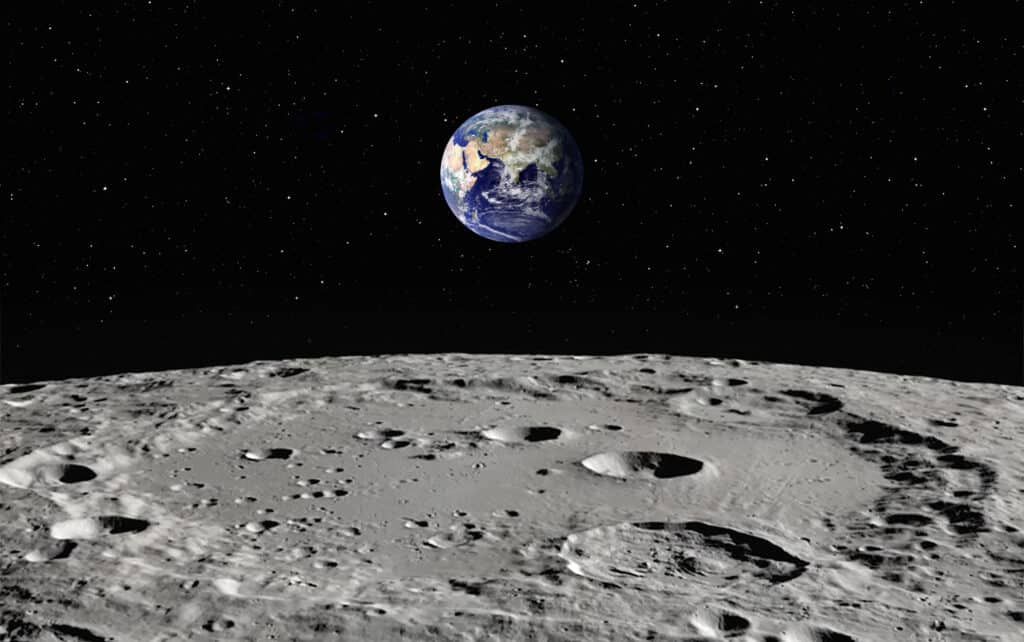
What is a crater?
A crater is a bowl-shaped depression formed by the impact of a meteorite, volcanic activity, or an explosion.
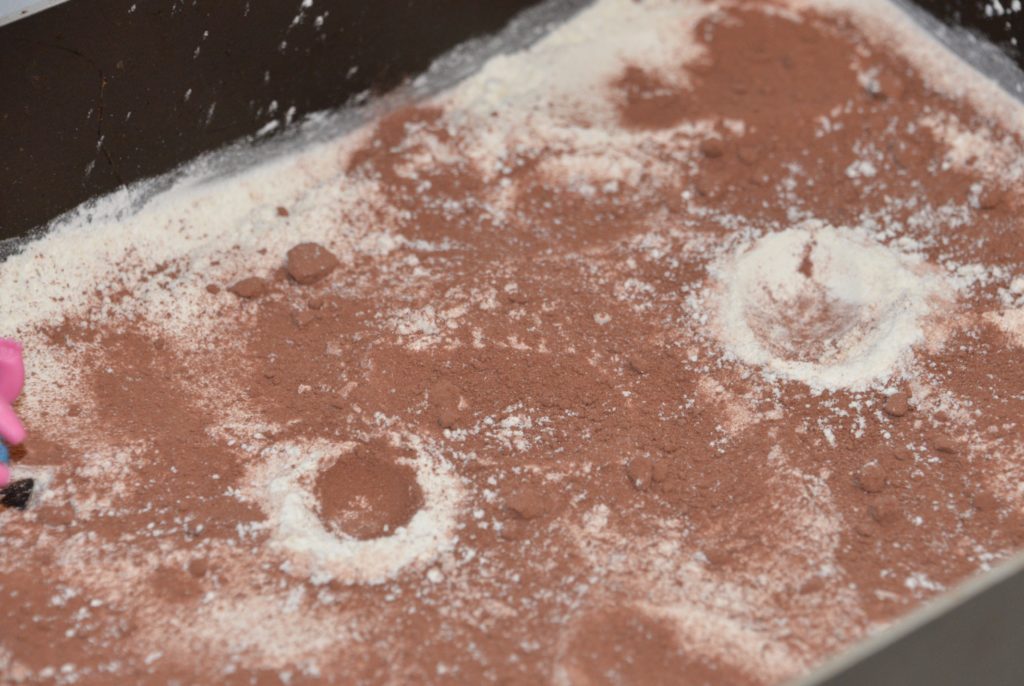
How are craters made?
You’ll need
A shallow metal pan
Plain white flour
Cocoa powder
Ruler
Marbles and different sized balls.
Making Craters with Marbles
Fill the tray about 2 cm deep with flour, and lightly sprinkle the cocoa powder over the top to cover the entire surface.
Drop the marbles into the tray. The marbles represent crashing asteroids and comets.
Create craters using different size balls and marbles.
Measure and record the size of the crater for each ball.
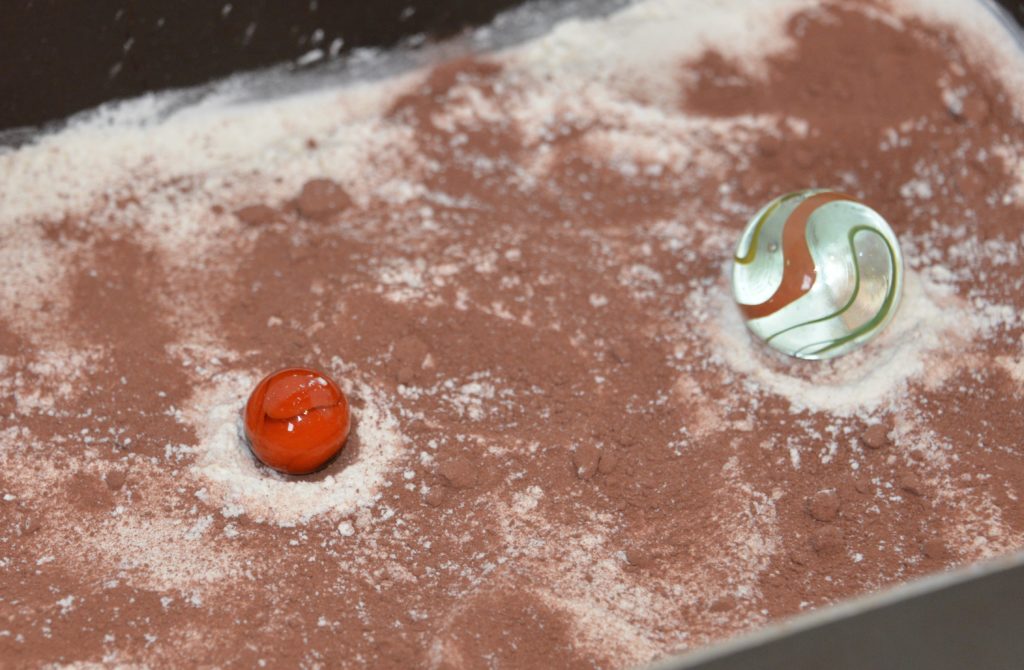
You should find that if you drop marbles of the same size from different heights, the one with the furthest to fall will make the largest crater as it is moving faster, so it has more energy when it hits the surface, creating a deeper depression.
Why do craters form?
The surface of the moon is marked by millions of craters, varying from just a few metres long to hundreds of kilometres long. Most formed a long time ago when comets, asteroids and meteorites crashed into the moon’s surface.
Craters on Earth
Barringer Crater ( also known as Meteor Crater ) in Arizona was created instantly when a 50-meter (164-foot), 150,000-ton meteorite slammed into the desert around 50,000 years ago.
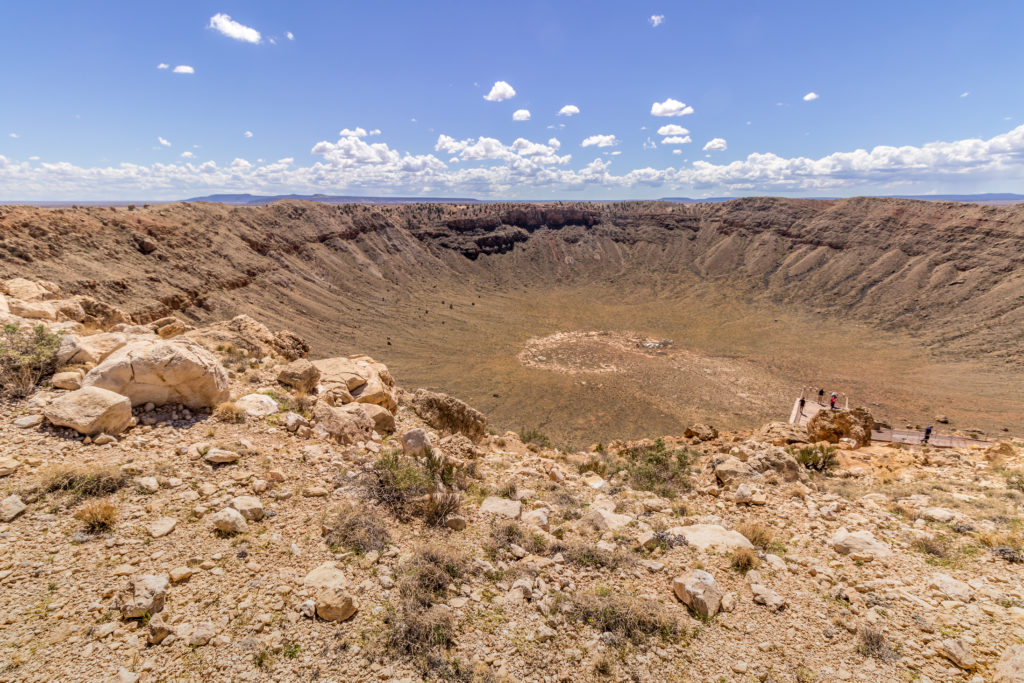
The Chicxulub Crater, off the Gulf of Mexico, is thought to be the impact site of the meteor, which wiped out or contributed greatly to the extinction of the dinosaurs at the end of the Cretaceous period 65 million years ago.
Mount Erebus in Antarctica, has a lava lake in its summit crater.
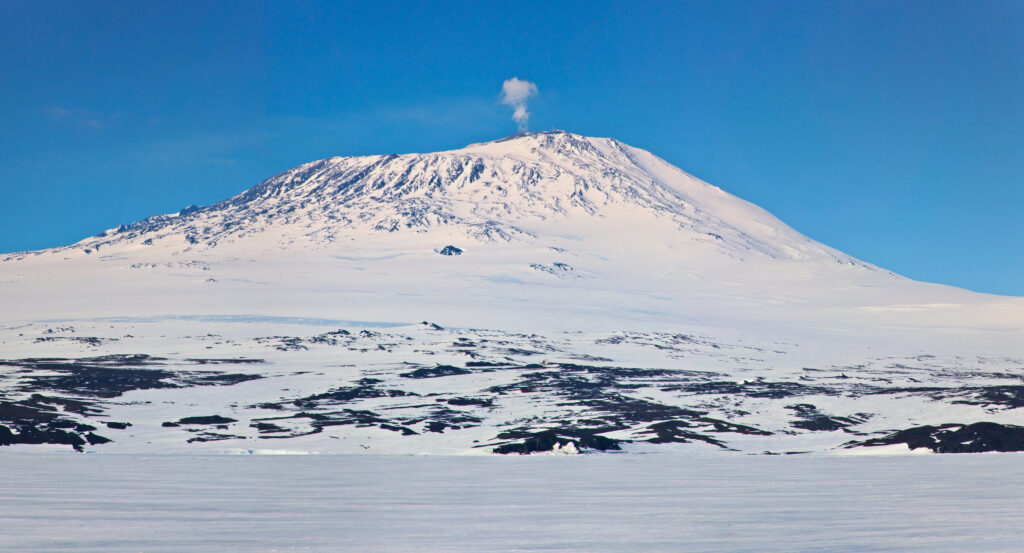
Read more about the biggest craters on Earth on Live Science.
What is the oldest crater on Earth?
The oldest ( and largest ) impact crater on Earth is the Vredefort crater in South Africa. It is estimated to have originally been 185 miles (300 kilometres) across. A huge meteorite or asteroid created this giant crater 2.02 billion years ago!
Creating Craters Instructions
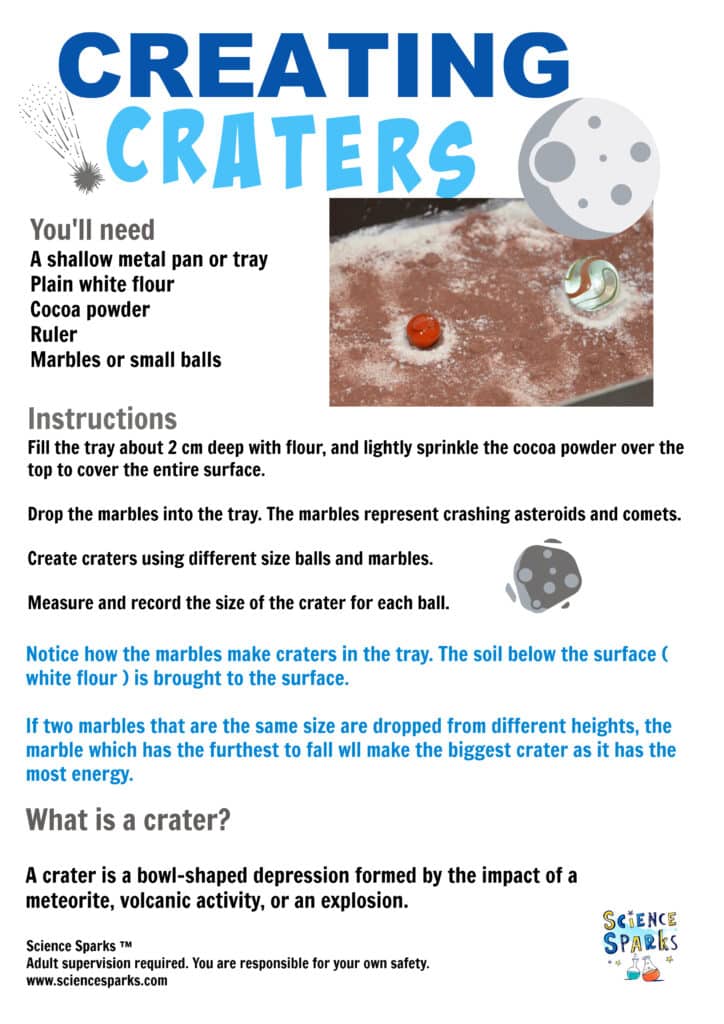
More Space Science Experiments for Kids
If you enjoyed this activity, you’ll love my other space science experiments, including rocket mice, space sensory trays, water bottle rockets and straw rockets! Most of them only need items you probably already have in the house. What are you waiting for?
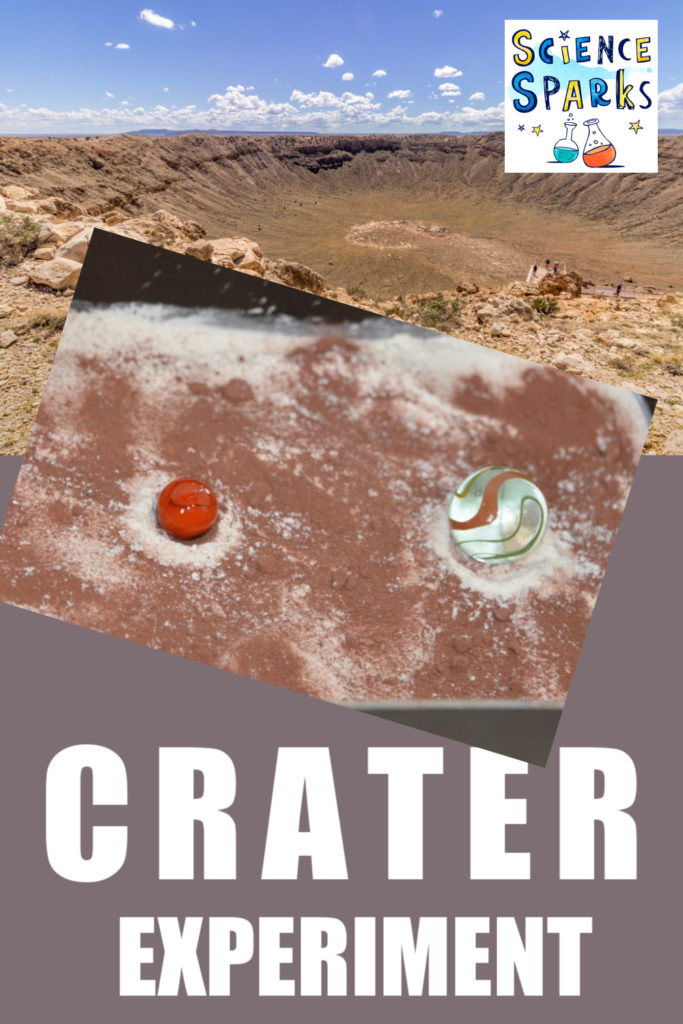
If your children love space, I’ve got lots of brilliant space themed experiments and activities in my book, This IS Rocket Science! I’d love you to take a look.
Last Updated on January 17, 2024 by Emma Vanstone

This looks fab x
I love it – the way that the flour comes to the surface really explains how there is difference in the colours of the moon surface. Got to try this out
Wow! This is lovely
I can’t wait to try it out with my pupils.
Brilliant I am going to try it with my Hedgehogs
I am very much looking forward to trying this with them tomorrow 🙂 Thank you for your lovely comments. x